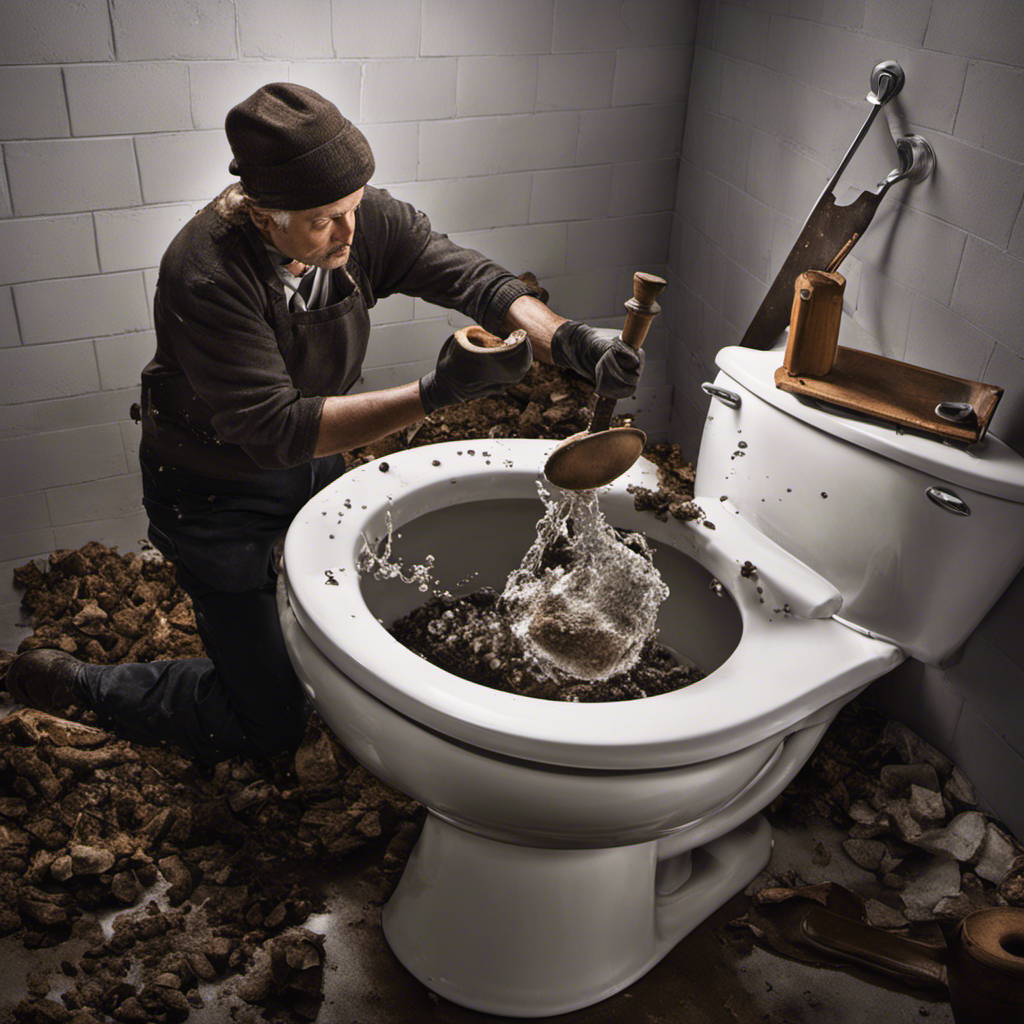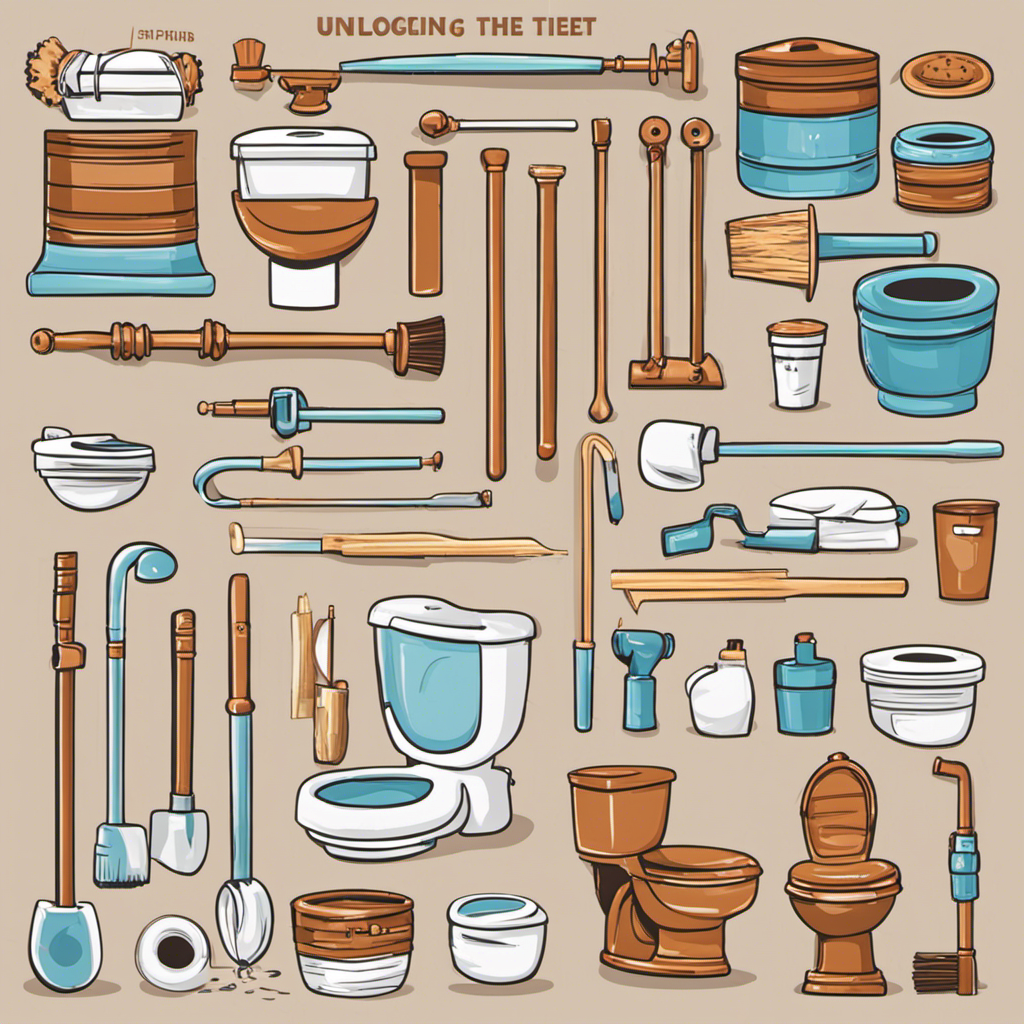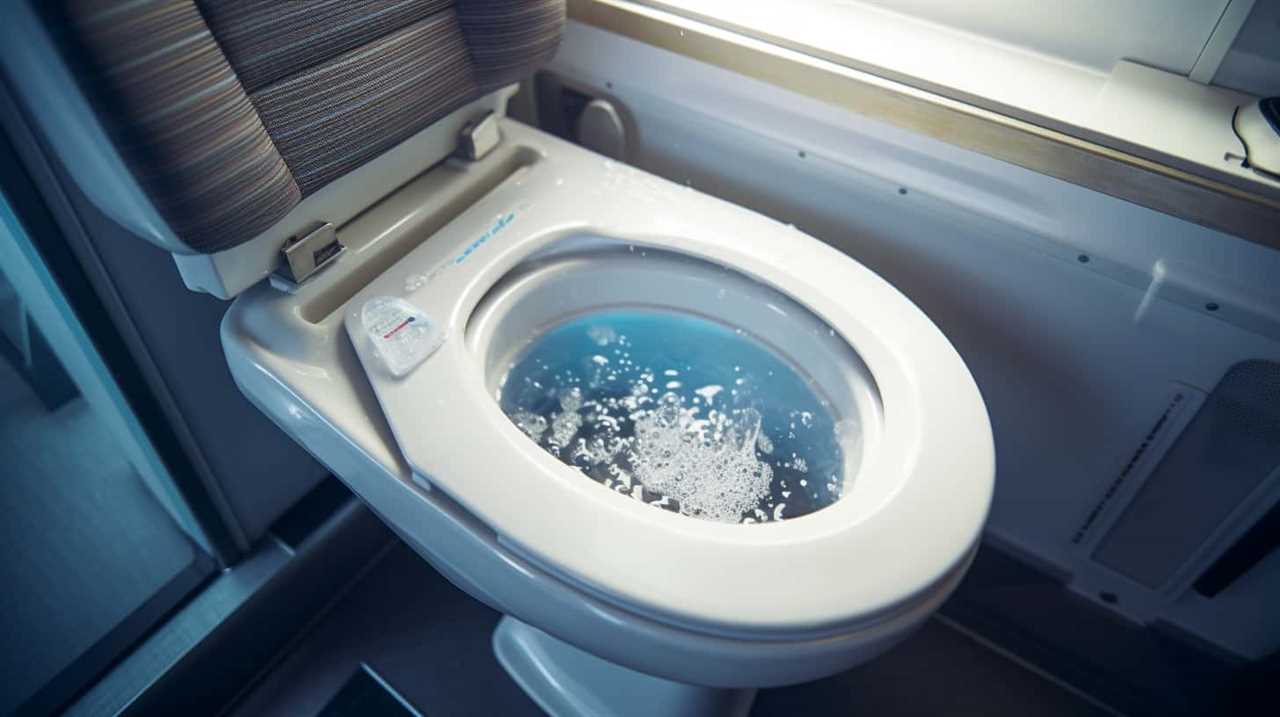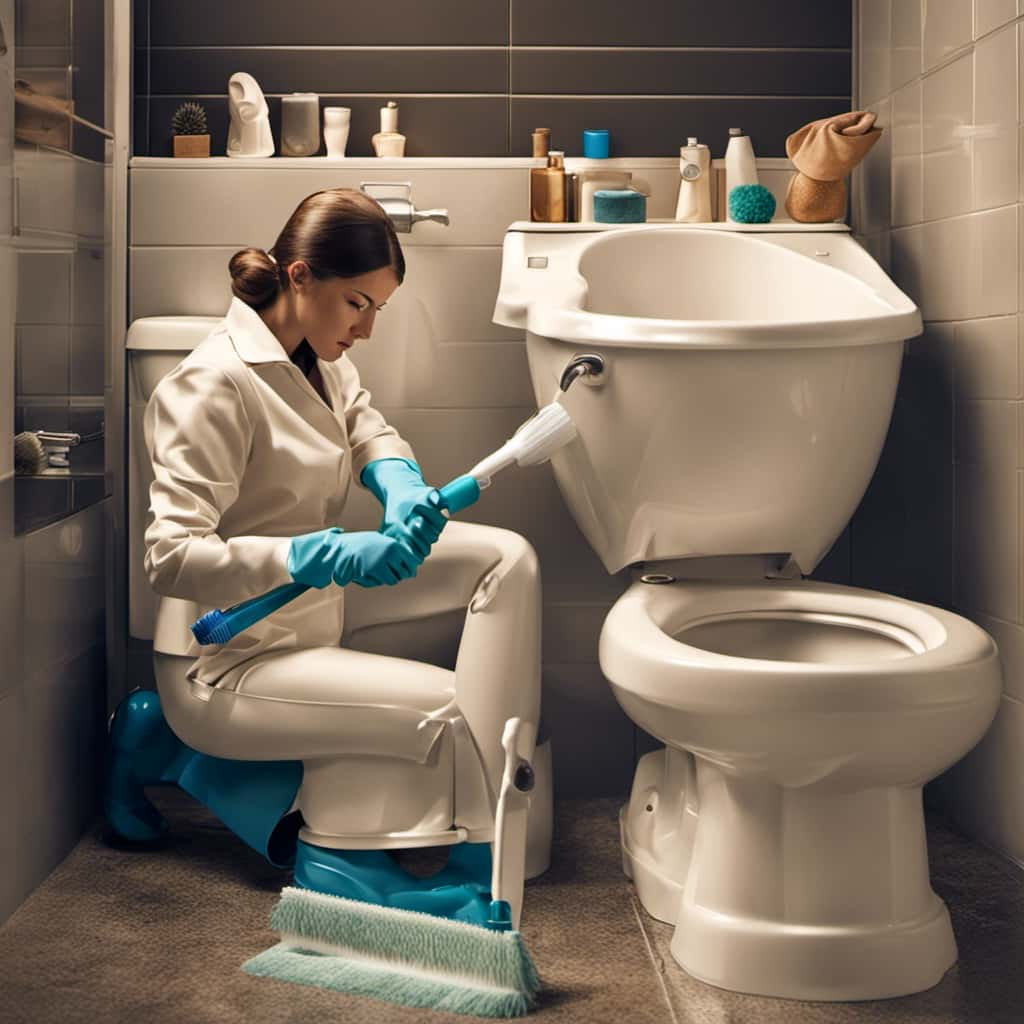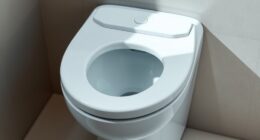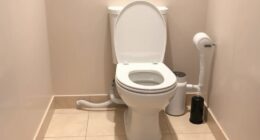Did you know that a clogged toilet drain is one of the most common plumbing issues homeowners face?
Don’t worry, though, because unclogging it yourself is easier than you think. In this article, we’ll guide you through the steps to remove minor clogs and even tackle stubborn ones.
With a few tools and some preventative measures, you can keep your toilet drain clear and avoid costly professional help.
So let’s get started and make your toilet drain flow freely again.
Key Takeaways
- Accumulation of toilet paper and debris is a common cause of toilet drain clogs.
- Using a plunger or a toilet auger can be effective in removing minor toilet drain clogs.
- Chemical drain cleaners should be used with caution as a last resort for stubborn clogs.
- Regular maintenance and cleaning, such as using a mixture of vinegar and baking soda, can help prevent future toilet drain clogs.
Understanding the Common Causes of Toilet Drain Clogs
You need to understand the common causes of toilet drain clogs so that you can prevent them in the future.
One of the main causes of toilet drain clogs is the accumulation of toilet paper and other debris. When too much toilet paper is flushed at once, it can create a blockage in the drain pipe.
Additionally, items such as wipes, feminine hygiene products, and excessive amounts of toilet paper should never be flushed down the toilet as they can easily cause clogs.
To prevent toilet drain clogs, it is important to use toilet paper in moderation and avoid flushing any non-flushable items. Regular maintenance, such as periodic cleaning and using a plunger or drain snake, can also help prevent clogs from occurring.
Tools and Supplies Needed for Unclogging a Toilet Drain
To successfully tackle the task at hand, make sure you have the necessary tools and supplies ready. When it comes to toilet drain maintenance, having the right equipment is essential. Here are the tools and supplies you’ll need to unclog a toilet drain efficiently.
Firstly, you’ll need a plunger. This is a common tool used for unclogging toilets and can be found at any hardware store. Make sure to choose a plunger with a flange, as it provides a better seal.
Additionally, a toilet auger, also known as a plumbing snake, is crucial for breaking up stubborn clogs. It’s a long, flexible wire that can reach deep into the drain to remove blockages.
Other supplies you’ll need include rubber gloves to protect your hands, a bucket to catch any excess water, and a towel or old rags to clean up any spills.
Step-by-Step Guide to Removing a Minor Toilet Drain Clog
When tackling a minor clog, start by using a plunger to create pressure and dislodge any blockages.
To begin, ensure that the plunger covers the drain completely. Push down firmly and then pull up quickly to create suction. Repeat this motion several times until you notice the water level in the toilet bowl start to decrease.
If the plunger doesn’t work, try using a toilet auger. Insert the auger into the drain and rotate the handle clockwise to break up the clog.
If these methods fail, it may be necessary to remove the toilet and inspect the drain pipe for any obstructions.
Regular toilet drain maintenance, such as avoiding flushing excessive toilet paper or foreign objects, can help prevent clogs and troubleshooting toilet drain issues in the future.
Effective Methods for Clearing a Stubborn Toilet Drain Clog
When it comes to clearing a stubborn toilet drain clog, there are a few effective methods you can try.
One option is to use chemical drain cleaners, which can quickly dissolve the clog and restore proper flow.
Another option is to use a plunger, applying pressure to dislodge the blockage.
Alternatively, you can use an auger, a specialized tool designed to break up and remove clogs from the drain pipe.
Each method has its own advantages and considerations, so let’s dive into the details and discuss which approach might work best for you.
Chemical Drain Cleaners
Using chemical drain cleaners can be effective in unclogging a toilet drain. However, it is important to be aware of the potential toxicity of these cleaners. Most chemical drain cleaners contain harsh chemicals that can be harmful to your health and the environment.
Ingesting or inhaling these chemicals can cause serious health issues, and they can also damage your plumbing system over time.
Fortunately, there are alternatives to chemical drain cleaners that are safer and more environmentally friendly. For example, you can try using a combination of hot water, baking soda, and vinegar to break down the clog. Another option is to use a drain snake or a plunger to physically remove the blockage. These methods are effective and pose no risk to your health or the environment.
Now, let’s explore the next section: ‘plunger or auger?’.
Plunger or Auger?
The plunger is a common tool used for clearing blockages in pipes. It is a versatile and inexpensive tool that can handle most minor clogs. It creates suction and pressure to dislodge the blockage and allows water to flow freely again. However, it may not be effective against stubborn or deep clogs.
On the other hand, the snake, also known as an auger, is a more powerful tool that can reach deeper into the drain to remove tough clogs. It is especially useful for clearing solid obstructions. However, snakes can be more expensive and require more skill to use properly.
Ultimately, the choice between a plunger and a snake depends on the severity and nature of the clog.
Preventative Measures to Avoid Future Toilet Drain Clogs
To prevent future toilet drain clogs, it’s important to regularly clean the pipes. Keeping your toilet drain clean is essential in avoiding common toilet drain issues.
Over time, debris such as hair, toilet paper, and other foreign objects can accumulate in the pipes, leading to blockages. To ensure smooth flow and prevent clogs, it is recommended to clean your toilet drain at least once a month.
Start by using a plunger to remove any visible clogs. Then, pour a mixture of hot water and vinegar down the drain to dissolve any remaining residue. For more stubborn clogs, a toilet auger can be used to break up the blockage.
When to Call a Professional for Toilet Drain Unclogging
When it comes to unclogging your toilet drain, you may be wondering whether you should take on the task yourself or call in a professional. Consider the factors of time and cost, as well as the complexity of the clog, to make an informed decision.
Understanding the differences between DIY and professional approaches can help you determine the best course of action for your specific situation.
DIY Vs. Professional
If you’re unsure about your plumbing skills, you might want to consider hiring a professional to unclog your toilet drain instead of attempting a DIY fix.
When it comes to DIY vs. professional, there are a few factors to consider: cost and effectiveness.
DIY fixes may seem cost-effective at first, but if you don’t have the proper tools or knowledge, you could end up causing more damage and spending more money in the long run.
On the other hand, hiring a professional may seem more expensive upfront, but they have the expertise and equipment to quickly and effectively unclog your toilet drain. They can also identify any underlying issues that may be causing the clog, preventing future problems.
Ultimately, the choice between DIY and professional depends on your confidence in your plumbing skills and your willingness to take on the risk.
Time and Cost
Considering your busy schedule and limited budget, it’s important to find a solution for your clogged toilet that is both time-efficient and cost-effective. When it comes to unclogging your toilet drain, there are various time management and cost-saving techniques you can employ. One option is to use a plunger, which is a simple tool that can often quickly and effectively clear the clog. Another technique is using a homemade mixture of hot water, dish soap, and vinegar, which can help break down the blockage. If these methods fail, you can try using a toilet auger, a flexible tool designed specifically for unclogging toilets. However, if all else fails, it may be necessary to call a professional plumber, but this should be your last resort due to the potential costs involved.
| Technique | Time Required | Cost |
|---|---|---|
| Plunger | 5-10 minutes | Low |
| Homemade Mixture | 30 minutes | Low |
| Toilet Auger | 15-30 minutes | Low |
Complex Clogs Require?
Now that you understand the time and cost involved in unclogging a toilet drain, let’s talk about what to do when you encounter complex clogs. These types of clogs can be frustrating, but with the right troubleshooting techniques, you can successfully clear them.
Here are some strategies to try:
-
Plunger: Use a flange plunger, which has an extra piece that extends to fit into the toilet drain. This will create a stronger seal and provide more pressure to dislodge the clog.
-
Auger: Also known as a plumbing snake, this tool is designed to break up tough clogs. Insert the auger into the drain and rotate the handle to catch and remove the obstruction.
-
Chemical Drain Cleaner: If the plunger and auger don’t work, you can try using a chemical drain cleaner. Follow the instructions carefully and use with caution.
Tips and Tricks for Maintaining a Clear Toilet Drain
To keep your toilet drain clear, it’s important to regularly clean it with a mixture of vinegar and baking soda.
Toilet drain maintenance is crucial for preventing clogs and ensuring smooth flushing.
Start by pouring half a cup of baking soda into the toilet bowl. Follow it with one cup of vinegar. Let the mixture sit for about 30 minutes. Then, flush the toilet to rinse away the debris and residue.
This simple DIY solution works wonders in breaking down any buildup in the drain.
Additionally, it’s recommended to use a toilet brush to scrub the inner surfaces of the bowl and remove any remaining residue.
Conclusion
So there you have it, now you know how to unclog a toilet drain. By understanding the common causes of clogs and having the right tools and supplies, you can tackle minor clogs with ease.
Following the step-by-step guide and using effective methods, you’ll be able to clear even the most stubborn clogs. Remember to take preventative measures to avoid future clogs and always call a professional when necessary.
With these tips and tricks, maintaining a clear toilet drain will be a breeze, leaving you with peace of mind and a fully functional bathroom.
